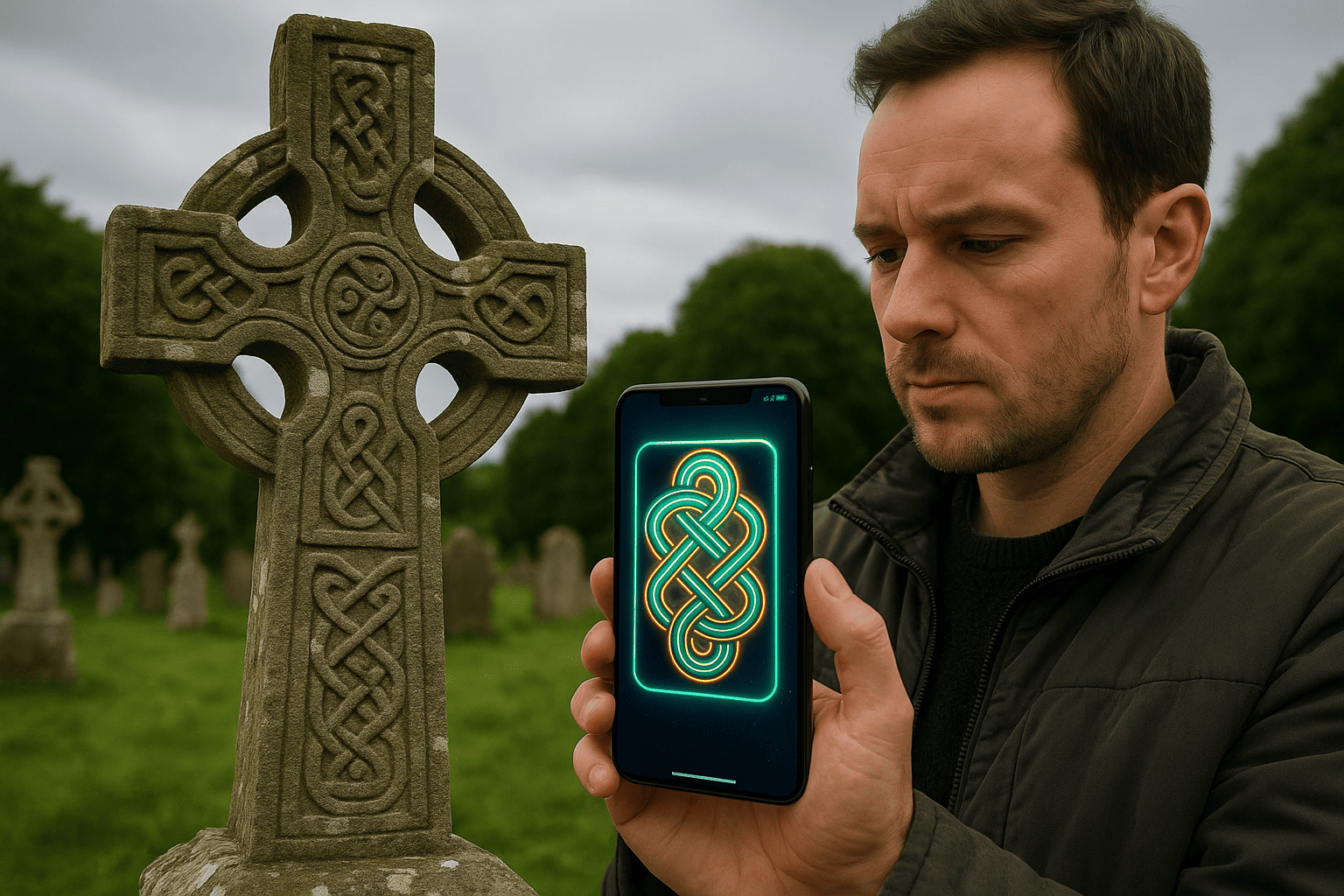
When Ornament Was Philosophy
Celtic art was never mere decoration. Its spirals, triskeles, and endless knots formed a philosophy of balance between nature, spirit, and time.
Medieval scribes in Irish monasteries elevated handwriting into architecture — letters built from gold and geometry. The Book of Kells remains the most dazzling example, a symphony of color and rhythm that seems to breathe eternity into the page. Every curve whispers of continuity, an early version of what we might call data visualization with a soul.
From Stone to Blockchain
Centuries later, that same sacred logic has found a new toolset. The chisel became a stylus; the parchment, a blockchain.
Cork-based digital artist Aoife O’Mahony transforms Celtic patterns into animated, glowing loops, each minted as an NFT — a digital relic of heritage encoded forever.
In Dublin, the Digital Éire Collective built Knotwork 2.0, a VR experience where visitors wander inside the illuminated tangles of the Book of Kells, walking through light as if through history itself.
Across Ireland, artists are showing that heritage isn’t a relic — it’s an algorithm, rewritten with every generation.
The Artist Who Minted Identity
Long before the NFT gold rush, an Irish-based conceptual artist quietly fused philosophy and code.
Kevin Abosch, born in Los Angeles but rooted in Dublin and Paris, made his name with minimalist portraits that explored identity and value. Then came Potato #345 — a single photograph that sold for more than €1 million. It wasn’t about the potato. It was about belief: proof that meaning, not matter, defines worth.
When blockchain appeared, Abosch saw not finance but language. In 2018, he launched IAMACOIN, tokenizing himself into 10 million blockchain coins — each a fragment of his being.
Critics called it absurd; history may call it prophetic.
By 2021, as NFT fever spread, Abosch had already minted his legend. His project 1111 turned raw transaction data into visual poetry, code transformed into emotion. According to The Irish Independent, his NFT collections surpassed €1 million in sales — making him Ireland’s first true crypto-art pioneer.
The Ripple Effect: Ireland’s NFT Moment
Abosch’s experiment lit a fuse.
In Dublin, the collective Mend, together with street-art group Subset, staged Comhartha (“Token”) — Ireland’s first physical NFT exhibition, where graffiti met blockchain in a converted warehouse.
Soon after, Grace O’Malley Whiskey released The Grace, 501 bottles each paired with an NFT artwork by street artist KinMx, authenticated through an NFC chip. Whiskey became data; heritage became a tradeable narrative.
It was pure Irish alchemy — rebellion meeting poetry, myth meeting code.
The New Guardians of the Old Rhythm
Beyond the NFT craze, Irish creators keep weaving myth into machine.
Eoin Barry projects AR Celtic symbols across Dublin’s walls, visible only through a phone lens, turning the city into an invisible gallery of legends.
The immersive project Echoes of Tara combines 3D sound with reconstructed imagery of Ireland’s sacred hill, inviting visitors to walk through layers of myth and memory.
For these artists, technology isn’t erasing the past; it’s extending it. They’re illuminating code with the same devotion that monks once gave to vellum.
Luck, Legacy, and the Language of Value
A 2024 survey found that 13 % of Irish adults own digital assets — among the highest adoption rates in Europe. Behind that number is not hype but heritage.
Ireland has always balanced reverence with reinvention, poetry with pragmatism. From manuscripts to smart contracts, it keeps asking the same questions:
What is value — faith, rarity, or love?
Can data hold emotion?
And why, after all this time, do humans still long to leave a mark?
The Eternal Loop
From Celtic knots to NFTs, Ireland’s art keeps looping — an unbroken thread of imagination.
The mediums have changed: stone to pixel, gold leaf to LED glow.
Yet the impulse remains identical — to illuminate, to believe, to connect.
Where once monks bent over vellum by candlelight, today’s artists code by screenlight, still chasing that eternal curve of meaning.
Every line is a prayer, every token a whisper:
We were here.
